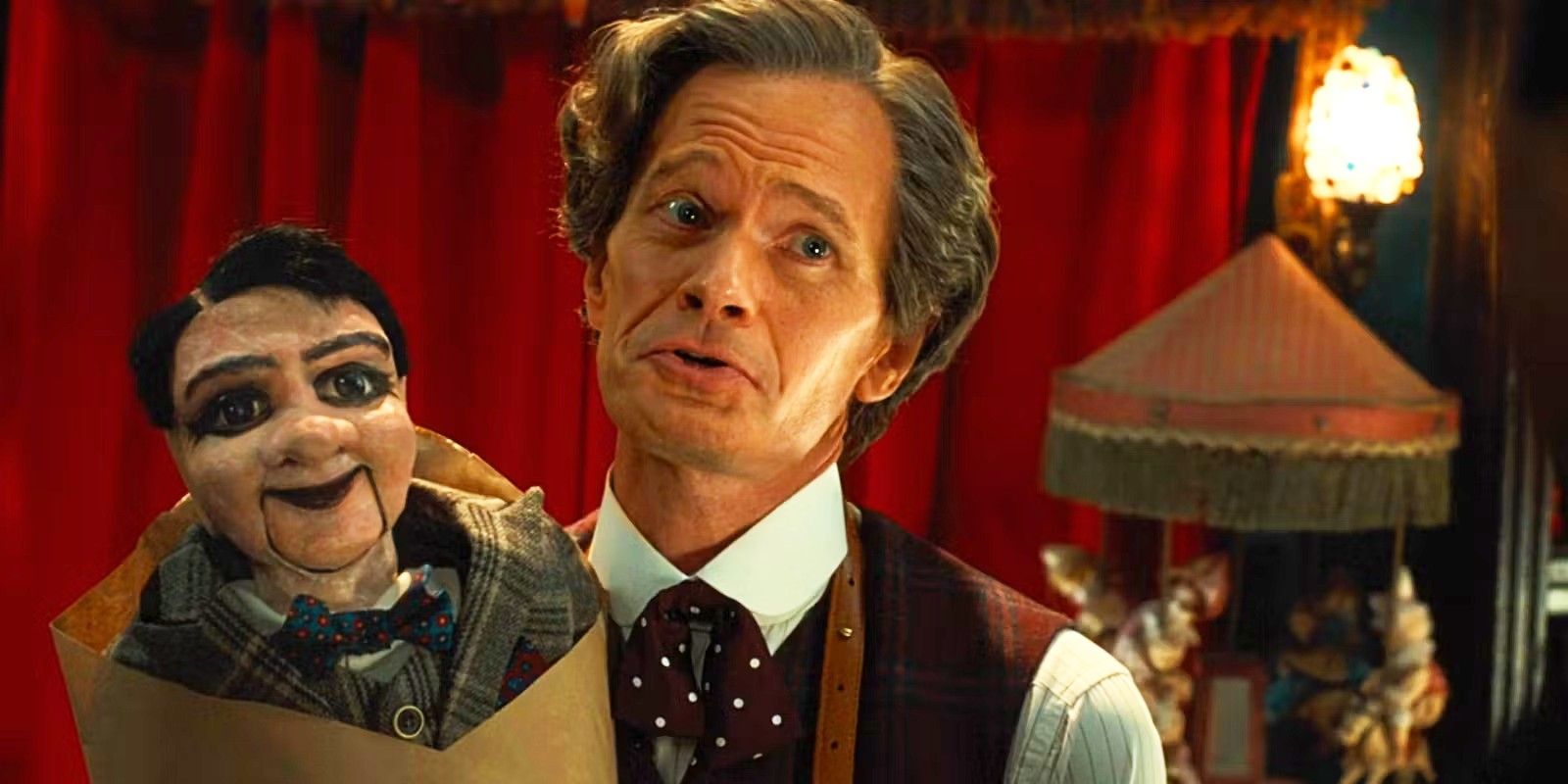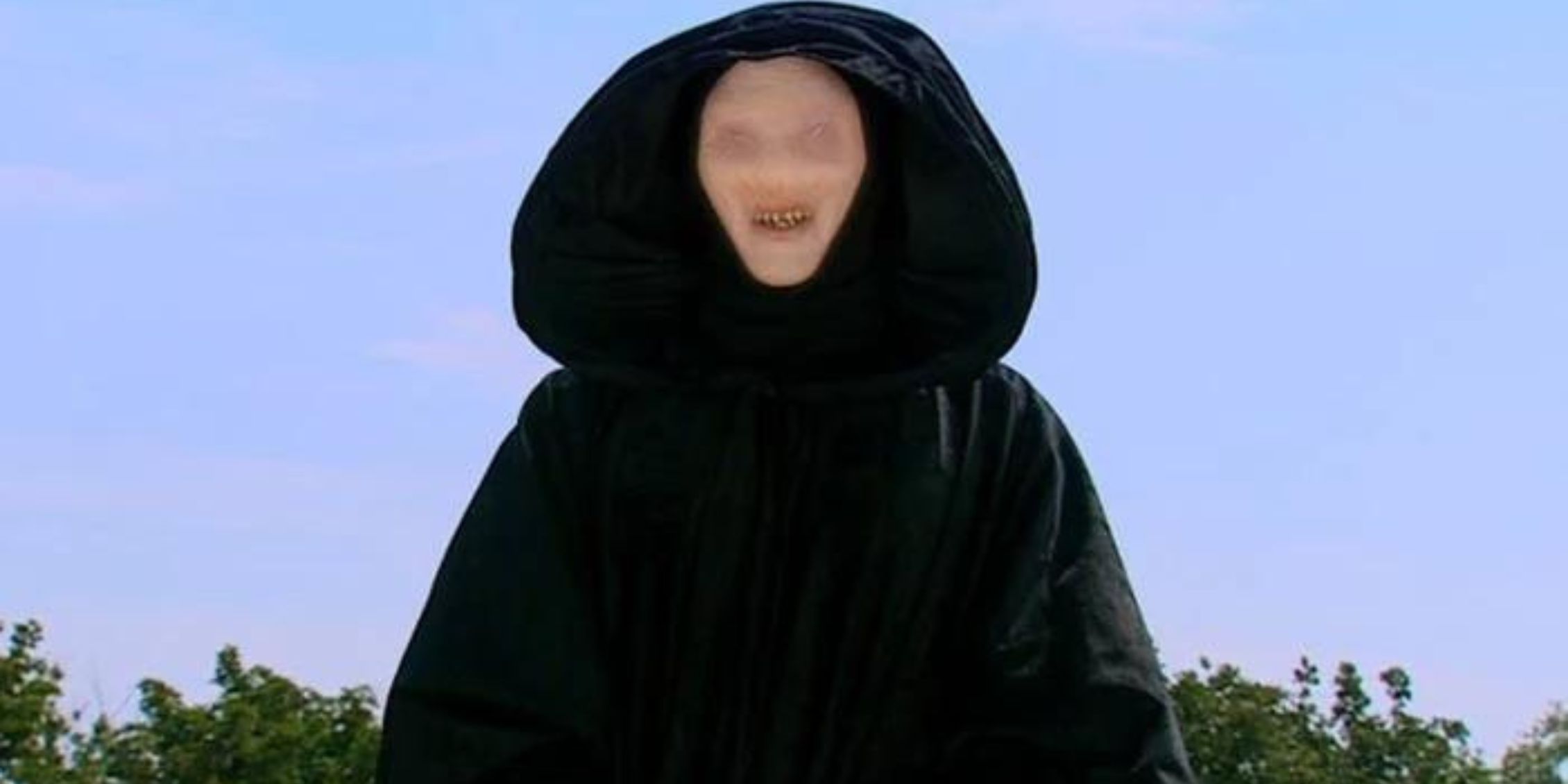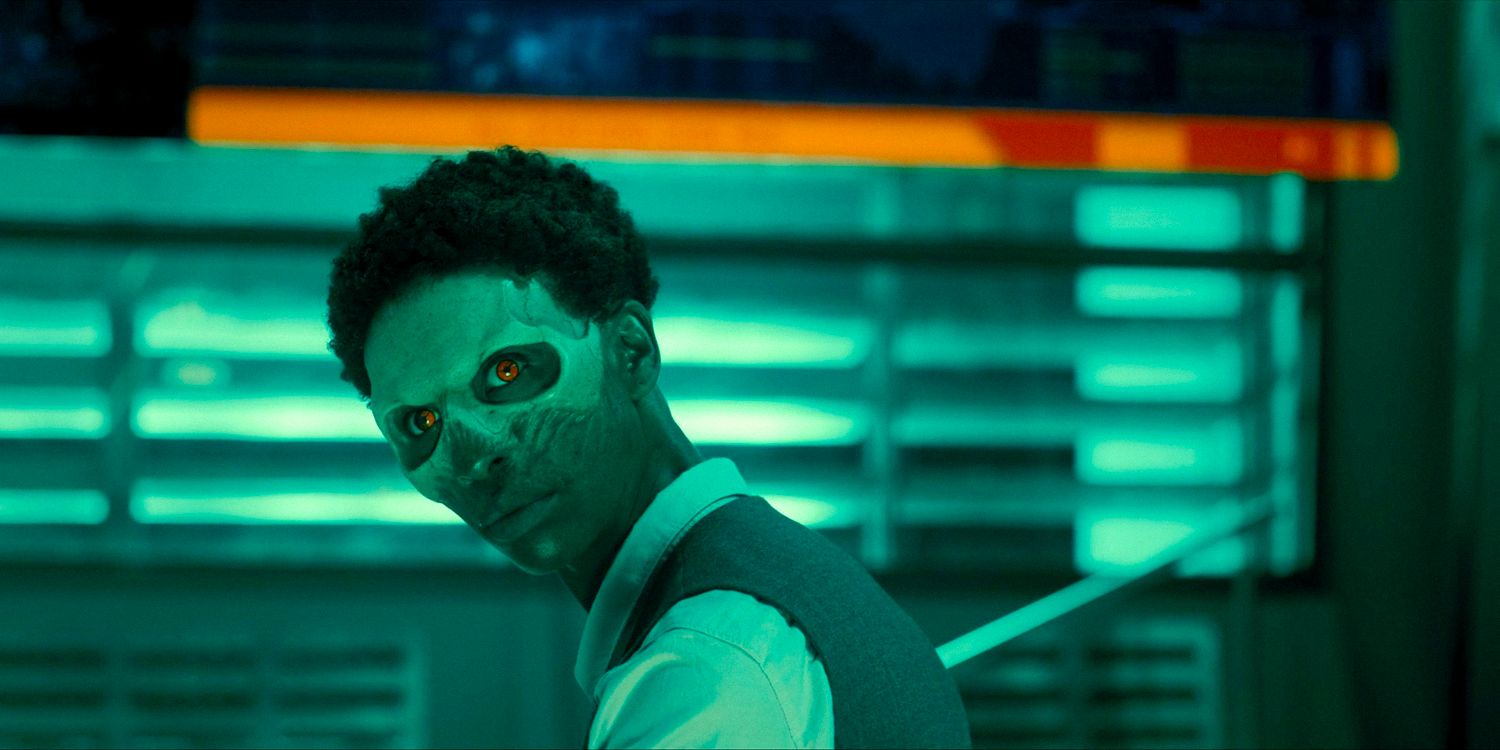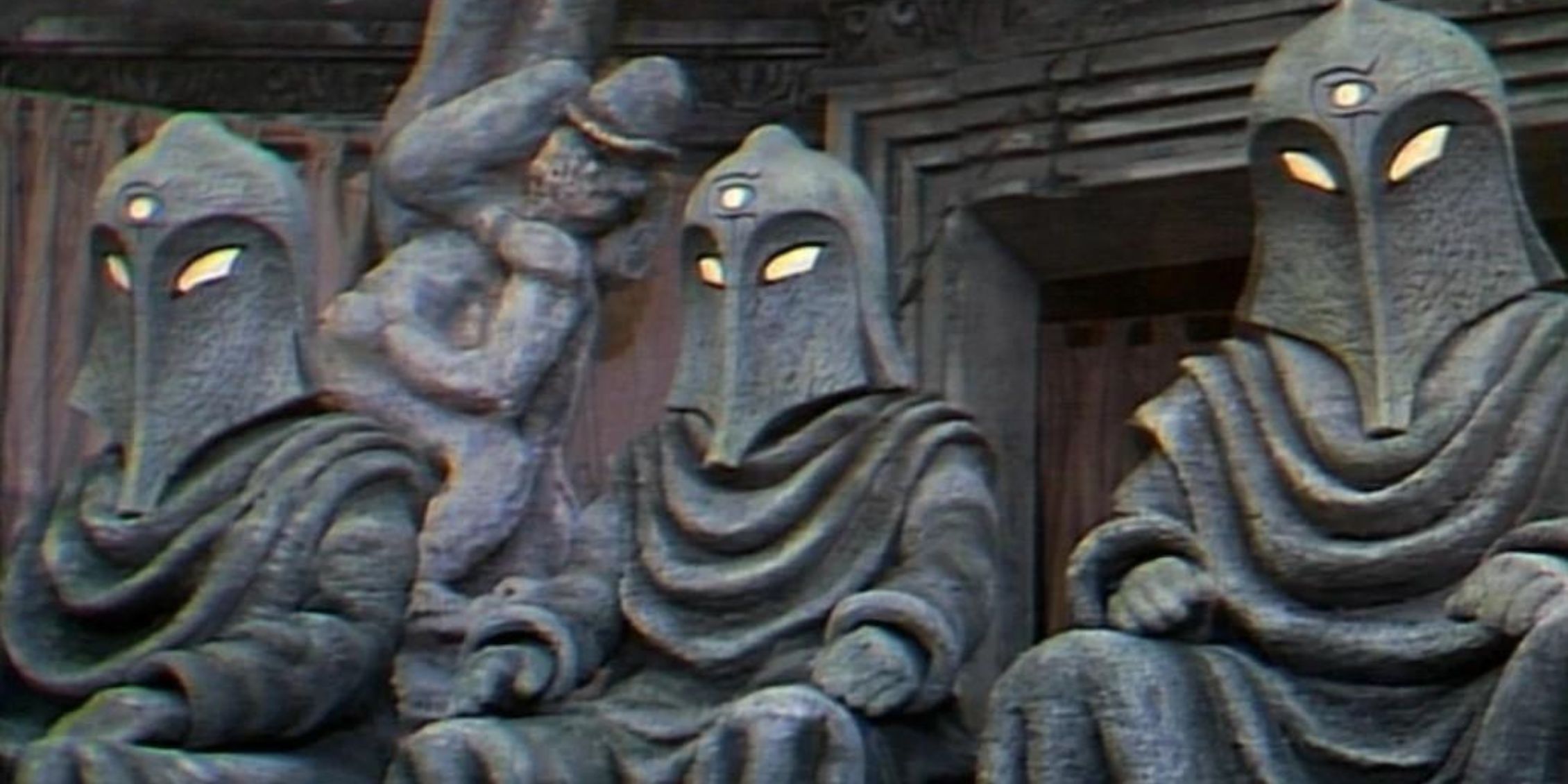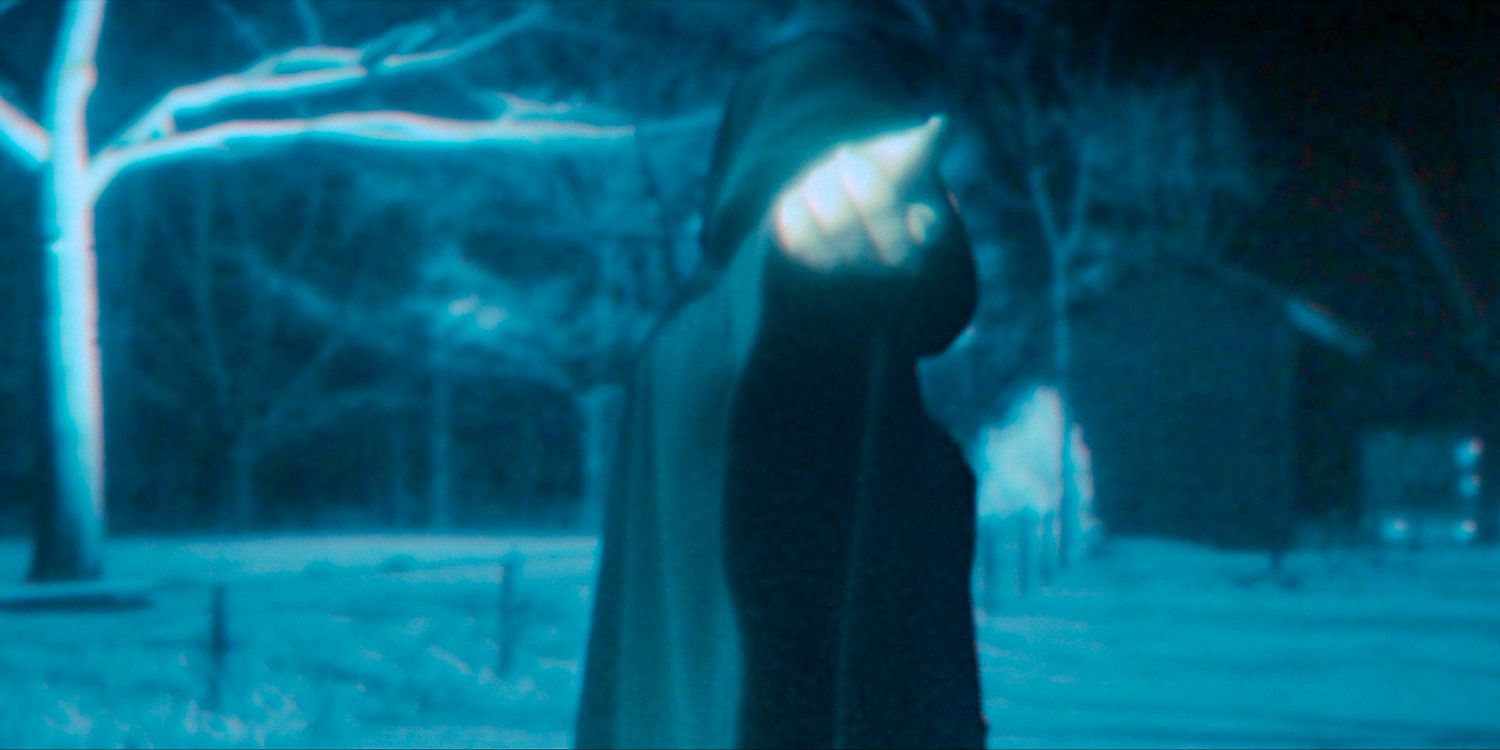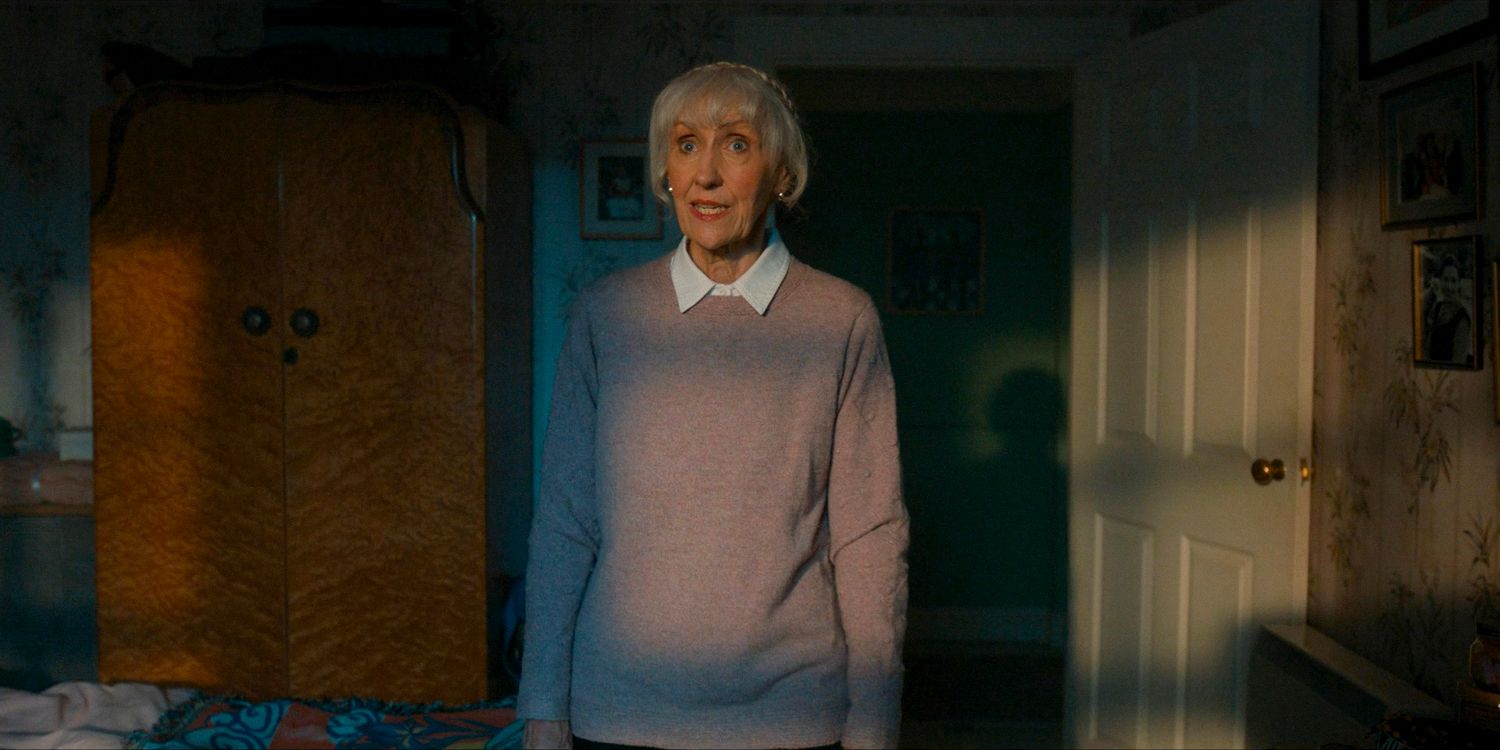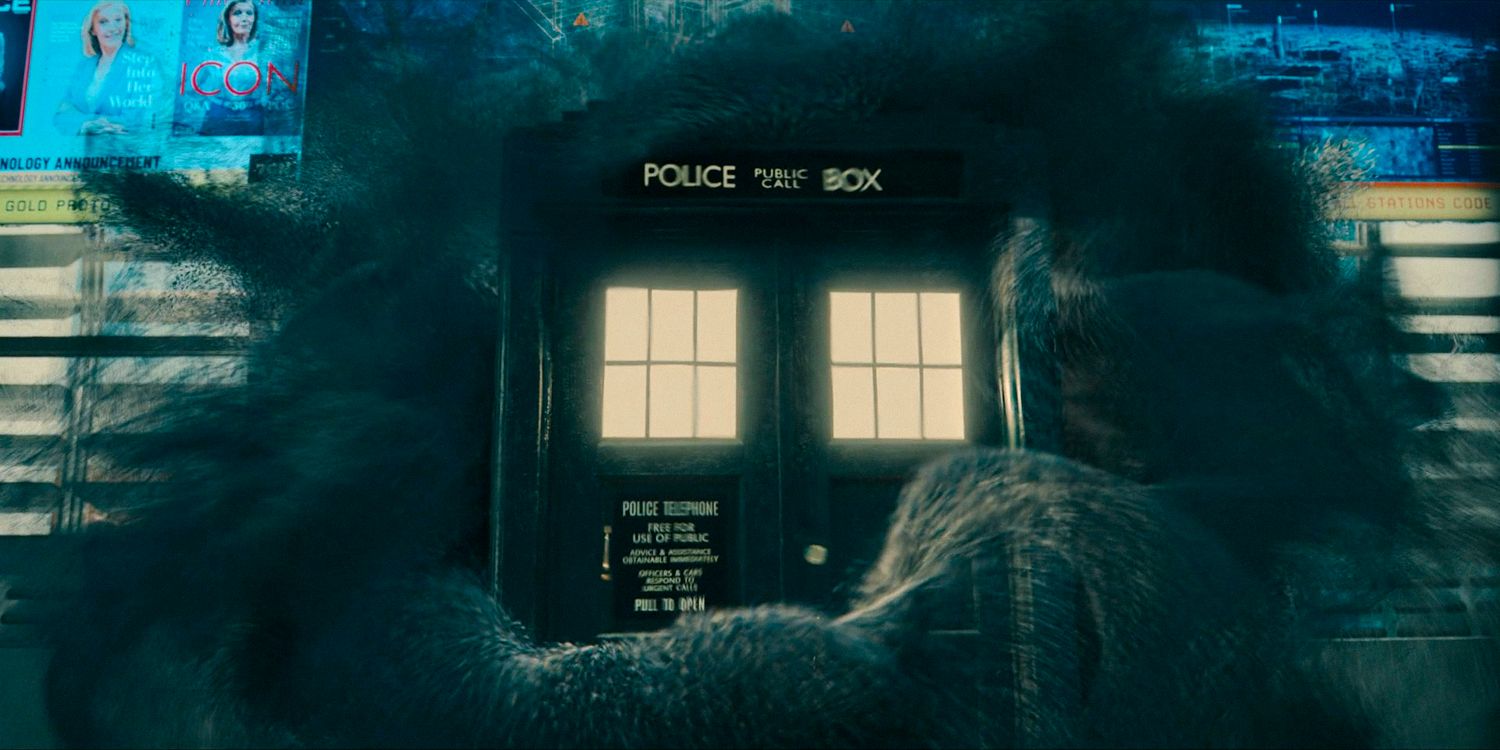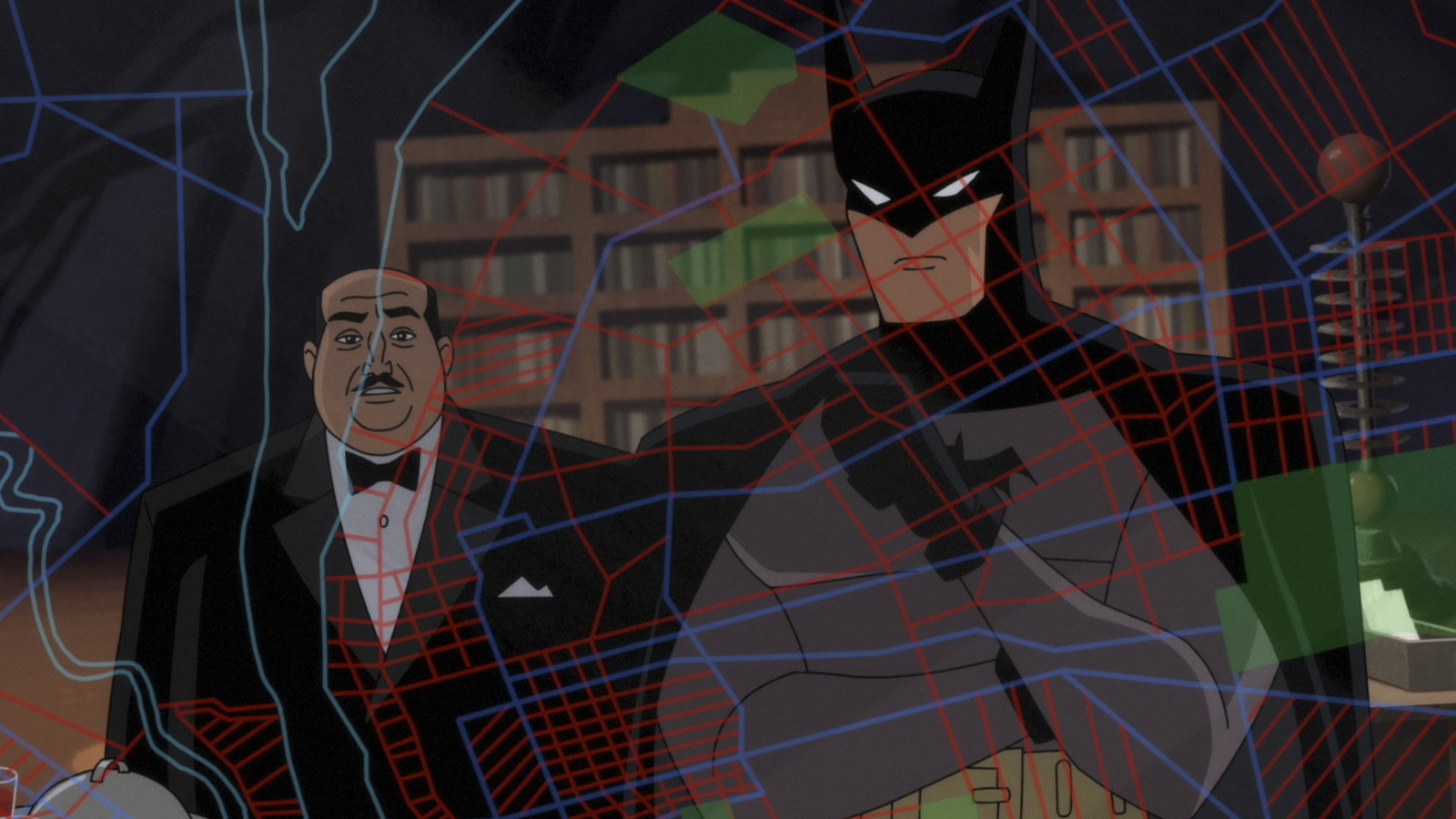Summary
- The Pantheon on Doctor Who are powerful, nearly unbeatable gods who enjoy wreaking havoc for fun.
- Sutekh, the God of Death, is back and causing chaos, even tricking the Doctor with a cruel deception.
- Other Pantheon members like the Celestial Toymaker and Maestro have also posed threats to the Doctor and companions.
The penultimate episode of Doctor Who season 14 not only revealed that Sutekh was back, but that there are several other gods associated with the Pantheon. The Pantheon has been explained on Doctor Who as a race of omnipotent, godlike creatures who leave a trail of destruction in their path. They are nearly impossible to defeat, especially those at the top of the chain, and enjoy wreaking havoc for their own sake. The revelation that there are many monsters associated with the Pantheon suggests that many of the best Doctor Who stories may have involved these villains, even if it didn’t seem like it when they aired.
The Fifteenth Doctor (Ncuti Gatwa) and his companion, Ruby Sunday (Millie Gibson), have tangled with the Pantheon several times, though the Pantheon storyline began with a Fourteenth Doctor (David Tennant) adventure that should have led to that incarnation’s death. The Fourteenth Doctor “bi-generated,” making him able to exist concurrently with the Fifteenth Doctor, and there have been other strange happenings that have suggested the Pantheon’s influence is changing time and space in undesirable ways. Here is a list of the gods that have been confirmed to exist so far on Doctor Who.
Related
Doctor Who Season 14 Finale Trailer: Ncuti Gatwa Confronts One Who Waits As Humanity Is At Stake
Death comes to the Whoniverse, as a scary foe returns and reigns supreme in the trailer for Doctor Who season 14’s epic finale, “Empire of Death.”
10 Sutekh
The God of Death is Also Known As “The One Who Waits”
Sutekh is an old enemy of the Doctor’s who first appeared in 1974’s “Pyramid of Mars.” Then, as now, he called himself the god of death, and his deepest desire was to destroy the entire universe. In the original story, The Doctor and Sarah Jane discovered Sutekh’s influence when they landed at an archaeological site that would eventually become UNIT headquarters and found a trail of death and destruction. The Doctor realized Sutekh was attempting to free himself from ancient bonds, which could not be allowed to happen or the universe would become a desolate wasteland.
“Pyramid of Mars” establishes that Sutekh is from the planet of Osiris and has been imprisoned in a pyramid by the Eye of Horus. Egyptian mythology includes Sutekh, the god of destruction, violence, deserts, and foreigners, murdering his brother Osiris, whose son was named Horus and was Sutekh’s worst enemy. The original story thus was a retelling of the Sutekh myth using sci-fi elements, though the plot of “Pyramid of Mars” is similar to the myth of Apep, the Egyptian god of darkness and chaos, who was imprisoned in the underworld because he was so dangerous.
Despite his cruelty, Sutekh believes himself to be a force of good that is alleviating suffering by bringing death to living creatures.
Sutekh’s return during “The Legend of Ruby Sunday” showed the depth of his cruelty, as he tricked the Doctor into thinking that perhaps his granddaughter Susan was still alive, only to reveal that it was the evil god himself who had been inhabiting Susan Triad’s body. Despite his cruelty, Sutekh believes himself to be a force of good that is alleviating suffering by bringing death to living creatures. He likely also has a grudge against the Doctor, as the Fourth Doctor re-imprisoned him in a time tunnel to stop him from destroying the universe.
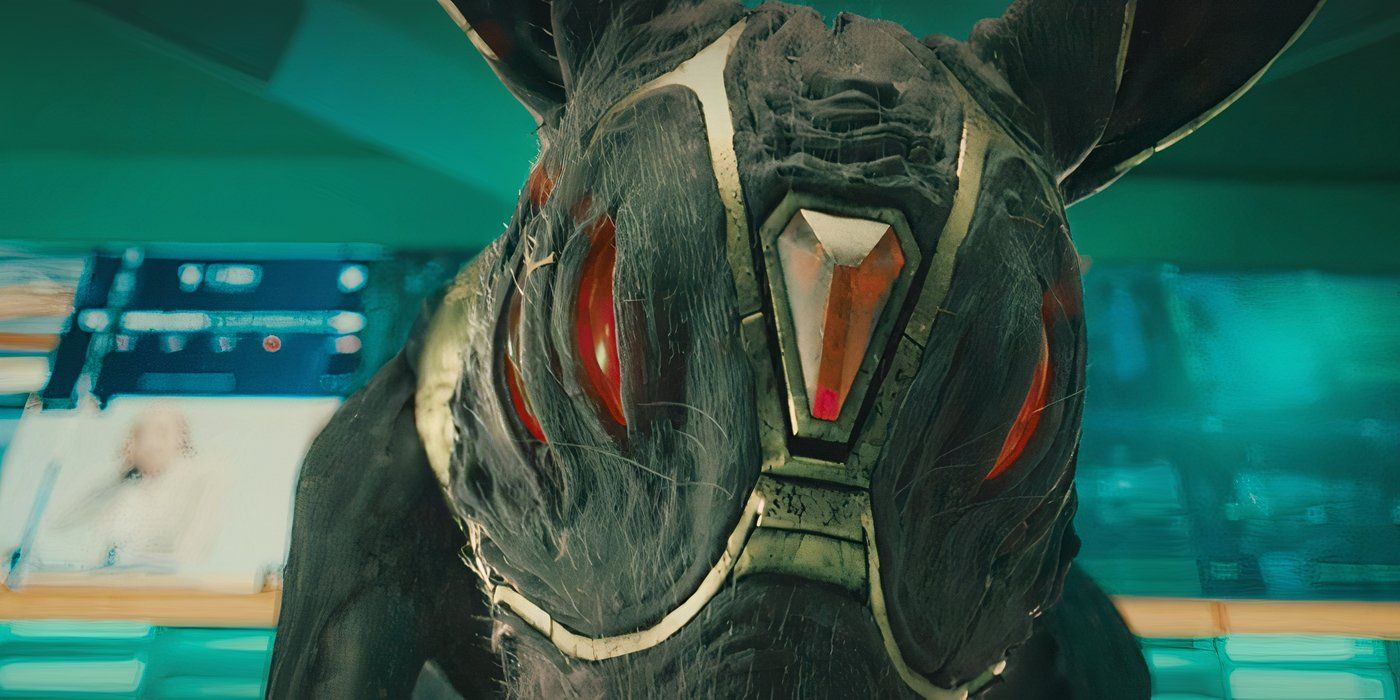
Related
Does Doctor Who’s Sutekh reveal work if you’re not familiar with the Tom Baker-era villain?
This seems to be something the fandom can’t agree on – some think it’s impenetrable, others claim casual friends totally got it.I’m a big fan of New Who, haven’t watched much of the Classic series, and found it all a bit alienating – the anagram part of the twist especially felt like it was meant to be something you should know. But how many people watching Doctor Who in 2024 have seen Pyramids of Mars?Compare to The Master in season 3, which had lots of explicit textual set up (fob watches, You Are Not Alone). I’m not saying the villain didn’t have to be Sutekh – but perhaps the twist should have been more about his methods/mechanics/Pantheon plans and less about his name and history.
9 The Celestial Toymaker
The God of Games Tangled With the First Doctor in a Lost Episode
The Celestial Toymaker (Neil Patrick Harris) was also an old enemy of the Doctor, having faced off with him during a William Hartnell episode that has since been lost. Originally, the Toymaker was an enigmatic figure who had the power to force people to play games with him, with disastrous consequences for the loser, and there was speculation about whether he was another Time Lord.
That changed during “The Giggle,” when Doctor Who explained the Toymaster’s origins and the Toymaster was revealed to be a member of the Pantheon. Although the Doctor defeated him, it came at a price, and the Fourteenth Doctor was mortally wounded. However, the Doctor bi-generated instead of regenerating, which likely was a result of the Toymaker’s influence on the universe. The Toymaker also revealed prior to his death that he was scared of The One Who Waits, setting up the season’s mystery about who that might be.
There is still a mystery surrounding the Toymaker, as he had turned the Master into a gold tooth and a hand was seen picking up that tooth after the Toymaker was defeated.
8 Maestro
The God of Music Wanted to Steal It All for Themselves
Maestro was the first Pantheon member the Doctor and Ruby encountered on their adventures. They traveled to 1963 England, as Ruby wanted to see the Beatles making their debut album, only to find a world in which music did not exist and the members of the Beatles felt that they were wasting their time. These strange goings-on were the direct result of the Maestro stealing the music out of everyone’s soul.
The Maestro feasted on music and was starving because there was none left and thus tried to capture Ruby, who still had music in her soul. However, they soon picked up on the fact that The One Who Waits (later revealed to be Sutekh) was present at Ruby’s birth and backed off Ruby, too frightened to continue to torment her. This was an early clue that suggested that Ruby’s birth was somehow connected to the Pantheon.
There were several other clues as to Sutekh’s mischief during “The Devil’s Chord.” Most tellingly, the Doctor takes Ruby back to 2024, only for it to be a desolate wasteland because of the Maestro’s influence. This emotional scene mirrored a similar one between the Doctor and Sarah Jane during “Pyramid of Mars,” thus foreshadowing Sutekh’s arrival. In addition, one of Sutekh’s victims in the first part of “Pyramid of Mars” is playing the piano shortly before his death, and the scene is similar to the cold open that summoned the Maestro during “Devil’s Chord.”
7 The Mara
The God of Beasts Possessed a Fifth Doctor Companion Twice
The Mara is the only one of the Pantheon to have appeared in the classic series as of now. This evil creature was said to reside in the dark part of the mind, and during “Kinda,” it was able to infiltrate Tegan (Janet Fielding)’s when the character fell asleep under some wind chimes while waiting for the Doctor. Tegan had strange dreams featuring a creepy man who demanded that she consent to being him and was briefly possessed by the Mara, who wanted to influence a member of the Kinda tribe to start a war.
The Mara was depicted as an evil spirit that reveled in creating death and destruction, and the Kinda believed that the Mara caused war and could be defeated by being peaceful. Some ancient cultures refer to a similar being in their mythology, especially Icelandic culture, which saw the Mara as an evil spirit that cursed humans without making themselves known and blamed it for nightmares and sleep paralysis. These aspects were similar to the version of the Mara on Doctor Who, as it possessed people through dreams and they often didn’t realize they had been possessed.
Since the Mara possessed her twice, it’s unclear if Tegan is a necessary vessel for it to re-enter the human realm or whether it could find a new host and wreak more havoc
Something that happens to every Doctor Who companion is that they face life-threatening danger. However, Tegan is the only companion that has been possessed by the Mara. Since the Mara possessed her twice, it’s unclear if Tegan is a necessary vessel for it to re-enter the human realm or whether it could find a new host and wreak more havoc. The Mara has yet to appear in modern Doctor Who, but could do so, since Sutekh made a point of naming this monster as a member of the Pantheon.
6 The Trickster
The God of Traps Messed With One of the Doctor’s Old Companions
The Trickster likes to cause chaos and mess with the timeline. They had a particular fondness for messing with Sarah Jane Smith (Elisabeth Sladen), the Doctor’s former companion, and attempted to remove her from the timeline to cause trouble. The Trickster’s war with Sarah Jane lasted for several episodes of the spinoff series The Sarah Jane Adventures. This storyline revealed the Trickster to be a member of the Pantheon of Discord long before the Doctor tangled with the Pantheon.
The trickster tried several times to remove Sarah Jane from the timeline or otherwise alter her history to cause trouble. They have the power to get people to agree to deals at the moment of their deaths so that the victim survives but must do their bidding, and used this power to mess with Sarah Jane on various occasions. This power is similar to the trope of the deal with the devil found throughout literature; most cultures have some type of devil-like character that makes these types of deals for its own purposes.
5 Reprobate
The God of Spite Has Not Yet Been Seen
Reprobate is not yet part of the Doctor Who canon, but was mentioned by Sutekh when Sutekh made his grand entrance. Sutekh mentioned him being the god of spite; this could be an interesting addition if and when Reprobate makes an appearance, as the name suggests a focus on vengeance. Although this god has not been confirmed on-screen, during “73 Yards,” one of the pub patrons referred to the fairy circle binding a being who walks in spite, which could easily be Reprobate.
4 The Threefold Deity of Malice, Mischief, and Misery
It’s Possible This God Could Be One Being Or Three
Although Sutekh mentioned this god as a “threefold deity,” which suggests it is one god with three heads. However, it could also be three separate beings that usually travel together or appear identical to one another. This is another god or set of gods that has not appeared on-screen. However, the Seventh Doctor (Sylvester McCoy) once mentioned having fought the Gods of Ragnarok throughout his lifetime, and this was a set of three that was forcing people to entertain them, so it’s possible that these three could be retconned into the Pantheon.
3 Gods of Skin and Shame and Secrets
There Are Few Clues To Who These Enigmatic Gods Could Be
It’s unclear who these gods could be, since all Sutekh and his harbringer mentioned was this mysterious description. However, there are a few possibilities. It wasn’t explained fully what the not-things the Fourteenth Doctor dealt with were, so they could be related to these gods, and the reference to skin could also be a nod to the Chuldurs, who took people’s bodies as costumes. The mysterious figure from 73 Yards or Ruby’s mother could also be gods of shame and secrets, given their mysterious nature.
2 Incensor
It’s Possible a Familiar Face is The God of Disaster
Incensor has not yet been revealed on-screen, but it’s possible she is Mrs. Flood’s true identity. This contradicts a Doctor Who theory that Mrs. Flood is a Time Lord. However, it is equally plausible that she is a member of the Pantheon given the way she presents as a kindly neighbor yet made an ominous comment about Sutekh’s return while alone with Cherry. Thus, her name could be a clever play on words, as a flood is a type of disaster, while the similarity of her name to Amy Pond and River Song’s names is a red herring.
1 Dread and Doubt
Incensor’s Twin Children Are The Final Members of the Pantheon
Doctor Who has not only kept Dread and Doubt off-screen so far, but has not even made it clear whether these twins are identical or their genders. This makes these two the most mysterious members of the Pantheon. With so little information to go on, it’s difficult to determine anything about them. Doctor Who has had no shortage of twins in its 60-year history, but perhaps these two being from a different generation is foreshadowing that they will be entirely new villains rather than retcons of characters who have been seen before.
Doctor Who
season 14 streams on Disney+ and classic
Doctor Who
streams on Britbox.

Doctor Who
Originally premiered in 1963, Doctor Who is a sci-fi series that follows a powerful being known as a Time Lord, referred to as the Doctor. Using an interdimensional time-traveling ship known as the TARDIS, the Doctor travels time and space with various companions as they solve multiple problems and help avert catastrophe as much as they almost cause it. Though the Doctor is always the same character, they experience regenerations, allowing them to be recast every few seasons as a unique immortal being with new personality traits.
- Release Date
- November 23, 1963
- Seasons
- 14


